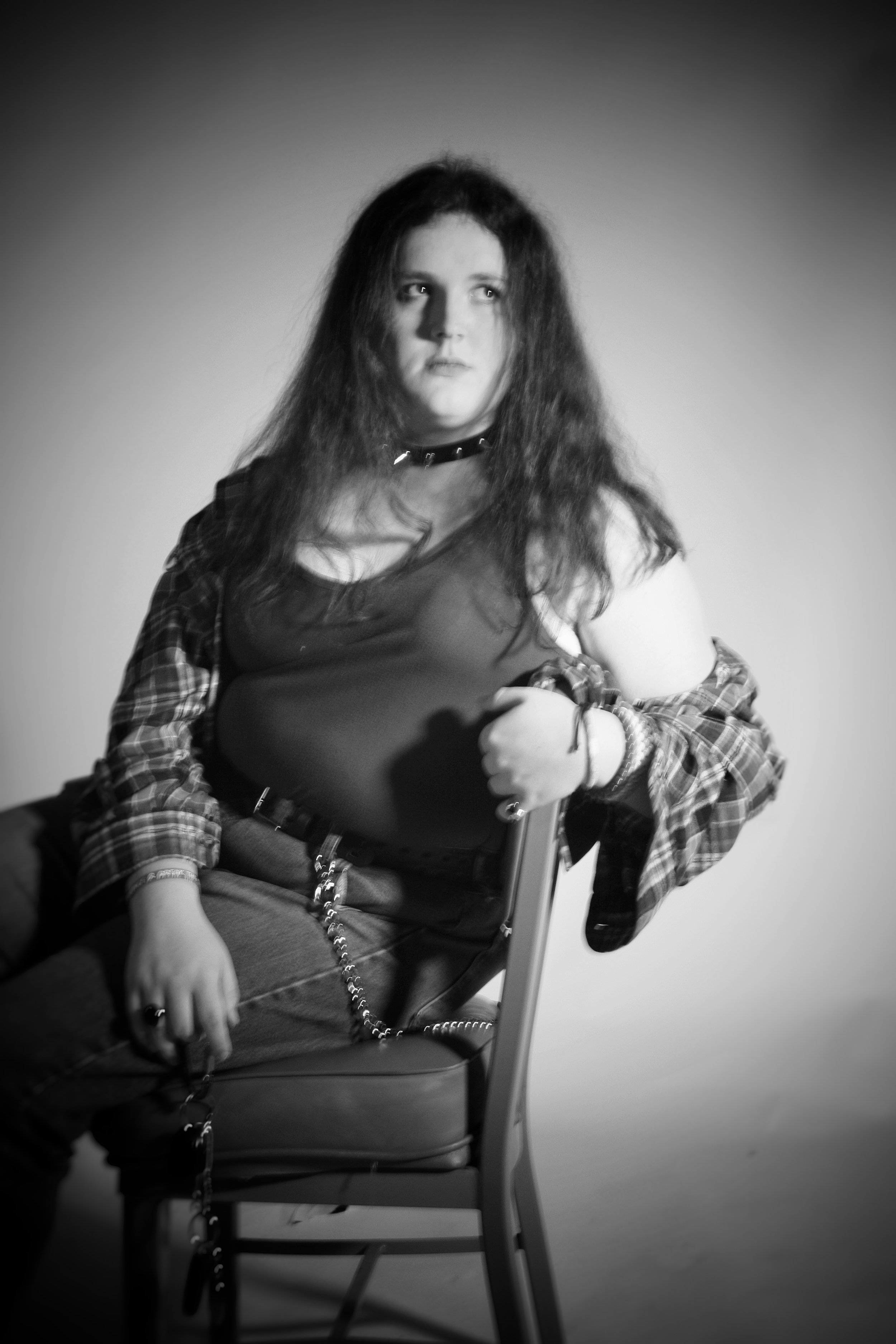A Non-Extensive History of Queer Fashion: Carabiners, Handkerchiefs, and Other Flags of Queerness
Creative Direction by Rachael Mueller
Written by Hazel Leeker
Photography by Ellie McCleary
Modeled by Anna Berkheimer, Hazel Leeker, Claire Boumstein, & Daniel Castillo
Fashion in the queer community has had a long and storied history, much longer than that of the modern queer movement. Androgyny has also been an important part of this history — gay men frequently wear outfits seen as more effeminate and lesbians may dress in more traditionally masculine clothes. However, one important thing members of the community have in common is the need to subtly flag their queerness to each other. Being queer is something that was and is still often dangerous to be, with persecution of the LGBTQ+ community being a common occurrence across much of human history. With that in mind, flagging (signaling your queerness using some form of code) has become a vital part of both queer fashion and queer communication.
There have been many different ways in which people have flagged their queerness over the decades, but one notable trend was the association of different types of flowers for queerness. Green carnations were popularized by Oscar Wilde as a way for men to signal their attraction to other men. The trend started when Wilde instructed several of his friends to wear green carnations on their left lapel when attending one of his plays. From then on, many gay men would wear green carnations on their lapels in order to show their sexuality.
So-called ‘sapphic’ violets served a similar purpose, though predominantly for women who loved other women. Sappho was a female Greek poet who was famous for her love of women, and the word "lesbian” comes from her home island of Lesbos. Some of Sappho’s surviving poetry discusses the adornment of a lover (of which she had many at one time) in wreaths of violets, as well as hyacinths. Pansies, lavender, calamuses, and more, have all, at one time or another, been associated with queerness. In addition, the color purple has grown to be associated with gays and lesbians in the centuries since the days of Sappho, stemming from the use of purple-colored flowers as indications of queerness.
Today, it’s much easier to present as more openly queer than it was in the past. Many members of the queer community now flag more directly by displaying a pride flag in their outfit. This could be a patch, pin, decal, or design, but there are still more subtle ways in which queers flag. Masculine lesbians over several decades have expressed their queerness through heavily wearing rings, flannel work shirts, carabiners and keychains hanging off of jeans, cargo pants, sporting short nails, and work boots, which also allows them to fit into the “butch” archetype (a butch is a type of lesbian who fits into a more masculine gender role, such as dressing and acting in a similar way to a man).
This style has become its own method of flagging, with the cultural concept of the butch becoming more widely known. Not only are butch lesbians choosing to wear these more masculine pieces, but femme lesbians are also using these as ways to flag. Gay men also often flag with the carabiner, as well as wearing bracelets, jewelry (such as a ear piercings), and dressing in non-traditionally masculine ways. However, there is one famous way in which gay men have used to discreetly flag to others, but its purpose wasn’t solely to express their attraction to men: The “hanky code.”
It would be a disservice to not discuss the famous “hanky code” in an article about flagging. A common practice from the 1940s and lasting into the 1990s, even somewhat today, is for gay men to subtly flag their availability through wearing a handkerchief in one of their pants pockets. However, the symbol has evolved into a general symbol of queerness. Wearing a handkerchief in any way can be a manner of flagging such as wearing it around your neck, as a bracelet, or traditionally in your back pocket. Even though the handkerchief was mostly worn by gay men, lesbian women had a history of sporting handkerchiefs as well.
All of these methods of flagging have found their ways into casual queer attire. Much of modern queer attire has integrated one or more of these elements into their composition. Even though it’s much safer now for queer people to be loud and proud about their queerness, this wasn’t the case at one point in time. Many queer people today still have used methods like these to flag in places where it’s still not very safe to do so. Examining this history of queer culture and its impact is very much important. Plus, it gives more people the chance to learn about different flags and maybe incorporate them into their own outfits as a way to display their queerness and to celebrate their history.










